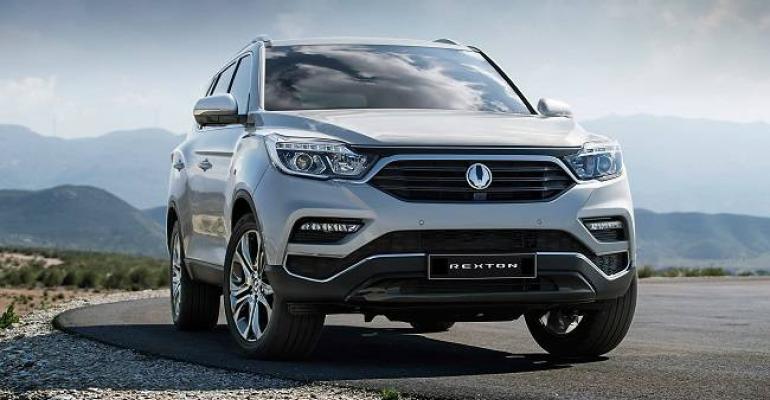Slow vehicle sales by Korean automakers in China and pending changes in laws affecting foreign investment cause Ssangyong Motors to scrub its plan to establish a joint-venture assembly plant with Shaanxi Automobile Group.
Ssangyong had announced signing a memorandum of understanding with Shaanxi in October 2016, but a spokesman tells WardsAuto the deal effectively is off the table.
The spokesman says changes in laws governing investments by foreign automakers and pending environmental regulations are factors, as is the impact of China’s ongoing politically motivated boycott of Korean-made products and services.
“We still plan to build a plant, but probably with a private company and not a government-owned company,” the spokesman says. “It will either be a JV with a private company, or some other method, if possible.”
Ssangyong does sell a few vehicles in China through a distributor, Pang Da Automobile Trade. But the automaker, 73% of which is owned by Indian conglomerate Mahindra & Mahindra, needs local production to avoid import tariffs of 20% and circumvent other trade barriers.
Word of the pullout from the deal with Shaanxi came Friday, Oct. 20, when Ssangyong President and CEO Choi Jong-sik mentioned it at a luncheon meeting with reporters.
Choi said Ssangyong had wanted to build an assembly plant in Xi’an in northwest China in a JV with Shaanxi, which is wholly owned by the government of Xi’an Province.
However, Choi said, Ssangyong has changed its mind because of poor sales of Korean vehicles in China and the pending new regulations.
A new Chinese law taking effect in April bans foreign automakers from being licensed for local production, regardless of whether they are a JV partner with a Chinese company.
New regulations would grant production authority only if all-electric vehicles are produced alongside conventionally powered vehicles. Such requirements enable the government to control vehicle production types.
As recently as June, Ssangyong spokesmen had been advising news media the deal with Shaanxi would be closed in second-half 2017, with plant construction to begin as early as 2019.
The spokesmen at that time acknowledged the government-encouraged boycott of Korean automobiles and other products, in retaliation for Korea deploying a U.S. air-defense missile system, had slowed the process.
Ssangyong is operating its only assembly plant in Pyeongtaek, Korea, well below its annual design capacity of 250,000 vehicles.
In the first nine months of 2017, Ssangyong sold 106,651 vehicles, a drop of 4.5% from the comparable 2016 period, when 111,683 vehicles were sold.





